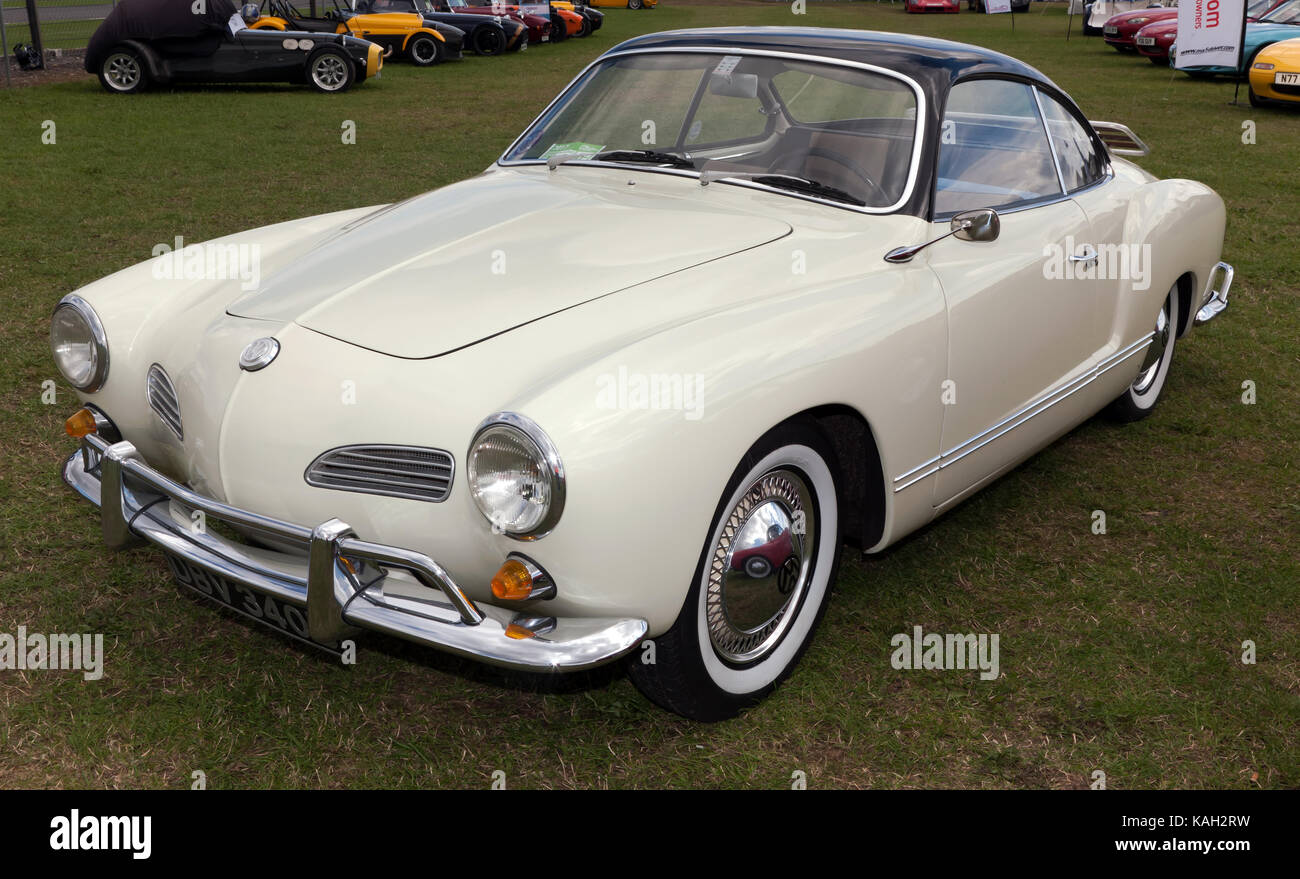Three-quarter view of a classic Volkswagen Karmann Ghia, on display at the 2017 Silverstone Classic

Image details
Contributor:
John Gaffen / Alamy Stock PhotoImage ID:
KAH2RWFile size:
49.3 MB (2 MB Compressed download)Releases:
Model - no | Property - noDo I need a release?Dimensions:
5327 x 3236 px | 45.1 x 27.4 cm | 17.8 x 10.8 inches | 300dpiDate taken:
30 July 2017Location:
Silverstone Circuit, Towcester, United KingdomMore information:
The Volkswagen Karmann Ghia is a sports car marketed in 2+2 coupe (1955–1974) and convertible (1957–1974) body styles by Volkswagen. The Karmann Ghia combined the chassis and mechanicals of the Type 1 (Beetle) with styling by Luigi Segre of the Italian carrozzeria Ghia and hand-built bodywork by the German coach-builder Karmann. The Karmann Ghia was internally designated the Typ 14. In 1961, Volkswagen introduced the Typ 34, a variant based on the newly introduced Type 3 platform and featuring angular bodywork. Production doubled soon after its introduction, becoming the car most imported into the U.S. More than 445, 000[3] Karmann Ghias were produced in Germany over the car's production life, not including the Type 34 variant. Karmann Ghia Brazil produced 41, 600 cars locally for South America between 1962 and 1975. American industrial designer Walter Dorwin Teague included the Karmann Ghia in his list of the world's most beautifully designed products. The Type 14 debuted at the October 1953 Paris Auto Show as a styling concept created for Ghia by Luigi Segre. In the early 1950s, Volkswagen was producing its economy car, the Type 1 (Beetle). With an increase in post-war standards of living, executives at Volkswagen proposed adding a halo car to its model range, contracting with German coachbuilder Karmann for its manufacture. Karmann in turn contracted the Italian firm Ghia, who adapted styling themes previously explored for Chrysler and Studebaker to a Beetle floorpan widened by 12 in (300 mm). Virgil Exner claimed that the design was his, based on the 1953 Chrysler D'Elegance. In contrast to the Beetle's machine-welded body with bolt-on fenders, the Karmann Ghia's body panels were butt-welded, hand-shaped, and smoothed with English pewter in a time-consuming process commensurate with higher-end manufacturers, resulting in the Karmann Ghia's higher price. The design and prototype were well received by Volkswagen executives, and in August 1955.